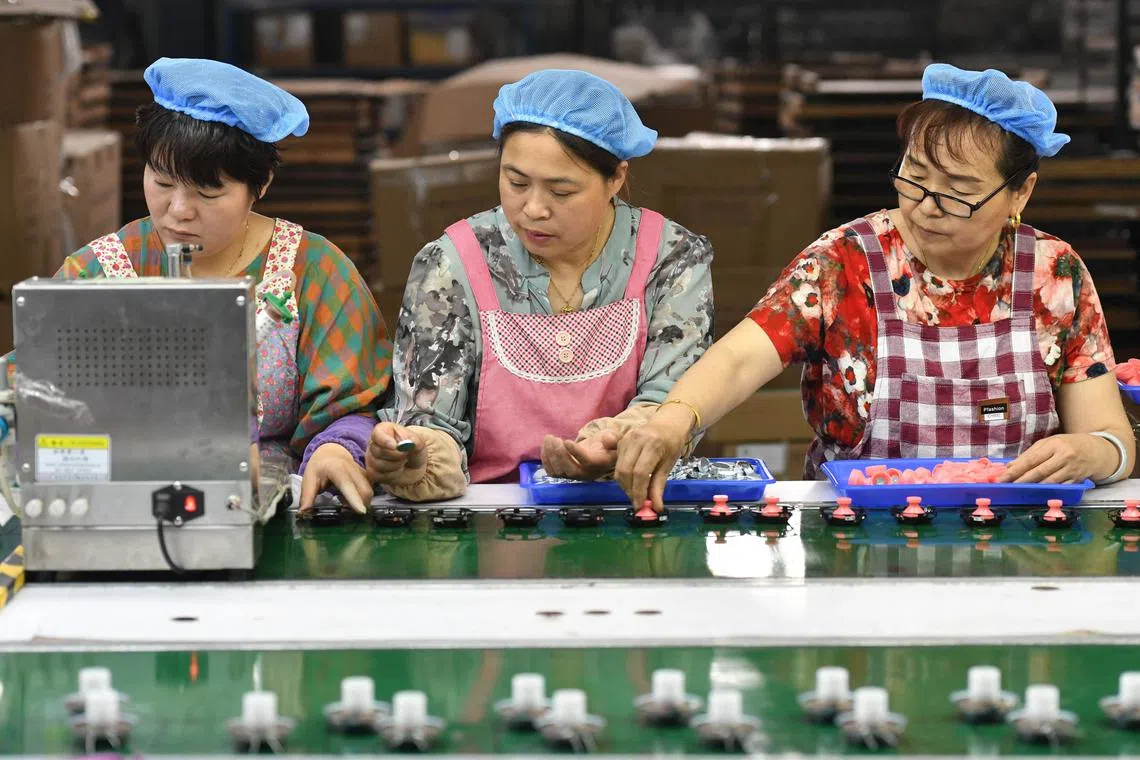China factory deflation steepens as demand wanes
Sign up now: Get ST's newsletters delivered to your inbox

China’s factory gate prices fell at the fastest pace in seven years in May as faltering demand weighed on a slowing manufacturing sector.
AFP
Follow topic:
BEIJING – China’s factory gate prices fell at the fastest pace in seven years in May and quicker than forecasted, as faltering demand weighed on a slowing manufacturing sector and cast a cloud over the fragile economic recovery.
As rising interest rates and inflation squeeze demand in the United States and Europe, China is in contrast battling a sharp decline in prices, with factories receiving less for their products from key overseas markets.
The producer price index for May fell for an eighth consecutive month, down 4.6 per cent, the National Bureau of Statistics said on Friday.
That was the fastest decline since February 2016 and bigger than the 4.3 per cent fall in a Reuters poll.
“The risk of deflation is still weighing on the economy,” said Mr Zhang Zhiwei, chief economist at Pinpoint Asset Management, in a note.
“Recent economic indicators send consistent signals that the economy is cooling,” he added.
China’s economy grew faster than expected in the first quarter, but recent indicators show demand is rapidly weakening with exports, imports and factory activity falling in May.
The consumer price index (CPI) rose 0.2 per cent year on year, up from a 0.1 per cent rise in April but missing a forecast for a 0.3 per cent increase.
Food price inflation, a key driver of CPI, slowed to 1 per cent year on year from 2.4 per cent in the previous month. On a month-on-month basis, food prices fell 0.7 per cent.
The Australia dollar eased 0.2 per cent to US$0.6704, tracking a fall in the Chinese currency yuan after the inflation data.
The government has set a target for average consumer prices in 2023 to be about 3 per cent.
Prices rose 2 per cent year on year in 2022.
“We still think a tightening labour market will put some upward pressure on inflation later this year, but it will remain well within policymakers’ comfort zone,” said Mr Julian Evans-Pritchard, head of China economics at Capital Economics, in a note.
Some economists expect the People’s Bank of China to cut rates or release more liquidity into the financial system.
The bank cut lenders’ reserve requirements ratio in March.
China’s biggest banks on Thursday said they had lowered interest rates on deposits, providing some relief for the financial sector and wider economy by easing pressure on profit margins and reducing lending costs.
Analysts have been downgrading their forecasts for economic growth for the year amid continued signs of slowing.
The government has set a modest gross domestic product growth target of around 5 per cent for this year, after missing the 2022 goal by a wide margin. REUTERS

